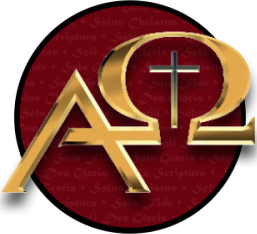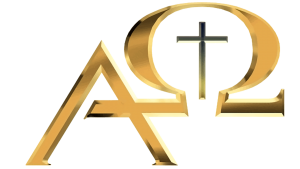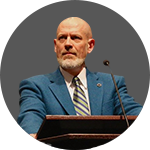This discussion keeps coming up, so, I am thankful I was given permission to post a brief written “disputatio” between myself and Douglas Wilson on the topic of the “Ecclesiastical Text.” Though we were limited to very brief statements (115 words) I think even this little discussion illustrated the problems with the Ecclesiastical Text theory. It sounds great, but there is one big problem: it cannot answer specifics about texts (sort of necessary for knowing the text of the NT!) and it just doesn’t ground itself in history. In any case, I think this took place somewhere around 1996 or so (just going off the top of my head). Here’s the full text:
Volume 10, Issue 1: Disputatio
Discerning the Manuscript Traditions
Douglas Wilson and James White
“I am of NIV,” some say. Others say, “I am of NASB.” Still others say, “I am of KJV.” Is it simply enough to respond to these various armies that they may water, but God gives the increase—so quit squabbling? If the translation one uses does matter, which should it be? And which of the ancient manuscripts should be used as a base for translation? In what follows, Douglas Wilson, editor of Credenda/Agenda, and James White discuss whether one manuscript is superior to another and how we might know that one is superior.
James White is the author of the book, The King James Only Controversy: Can You Trust the Modern Translations?, and the book, Letters to a Mormon Elder. He is the Director of Ministries for Alpha and Omega Ministries.
DW: The historic Protestant position on the manuscript tradition of Scripture is that God had divinely inspired the writing of the autographs and had providentially preserved the tradition of the apographs down to the present time. But with the advent of modernity, this simple faith was not scientific enough and independent textual critics began to work with the Scriptures as though they were just another collection of ancient books, subject to the same treatment. Conservatives like B.B. Warfield were concerned about these unbelieving encroachments, and so resolved simply to defend the autographs alone, a well-meaning but disastrous strategy. While rejecting the know-nothing approach of fundamentalism, historic Protestants need to return to the reformational doctrine of sola Scriptura.
JW: The central issue for any believing Christian when it comes to the text of the Bible is this: what did the original authors write? We must remember that the ultimate goal is to know what John or Paul wrote, not what a scribe, or group of scribes, or even a group of theologians, think they wrote. We must never forget that at times in the history of the Church certain texts have become enshrined by tradition rather than by force of historical verity. To be truly Reformed is to always test one’s traditions, and this is no less true when we examine the issue of text types and manuscript traditions.
DW: Agreed. But if we are able to know what the original autographs contained, and we do not have the autographs themselves, then we must have a reliable tradition or bridge of some sort which connects us to the original autographs. Since we agree that such a traditional bridge is necessary, then the debate concerns which manuscript tradition, and not whether we will have a manuscript tradition. It concerns which scribes are reliable, not whether intervening scribes are necessary. This means the “force of historical verity” is simply another way of referring to accurate tradition. And it appears to me that when we use this “force” as the standard, the textus receptus measures up quite well.
JW: Some have counted as many as one hundred different editions of the TR, so which one is being referred to is a major question. The most popular TR differs from the Majority Text in over 1,800 places, and contains obvious errors (such as those at Luke 2:22 or 2 Timothy 2:19). The early editions of the TR (the editions of Erasmus) were created on the same basis as modern texts, as Erasmus’ own comments make clear. The TR is an “artificial” text, just as all modern texts, in that there is not a single manuscript in the tradition that reads word-for-word as the TR.
DW: If a problem with the TR is variant readings, then how does it help to expand the field so that we have thousands more variant readings? The “errors” you cite are a wonderful example of the power of paradigms. How is “Christ” instead of “Lord” a mistake? Or Mary’s purification? The issue is not whether careful scholarship goes into the formation of the text, but rather who is qualified to do that scholarship, and who is responsible for authoritatively receiving it. The Church has been entrusted with the oracles of God, not autonomous scientists. We have agreed that a traditional manuscript bridge is necessary. Who stands guard at the bridge—the Church or autonomous science?
JW: It is a myth that the TR is the “received text.” The Church has never convened and compared one tradition against another and made that determination. Yet, there are many parallels between the arguments once used by Rome in favor of the Vulgate and the arguments used by some to support the TR. As to the errors cited, the issue is simple: just as I don’t accept the Vulgate’s renderings due to their “common use” for centuries, so I ask of the TR the same question: is that what Luke or Paul originally wrote? In both places, the TR gives a reading that stands against even the Majority Text.
DW: But the historic Protestant church did make that determination. Protestant theologians of the Reformation era asserted the autographs and the apographs in the original languages were both the breath of God. This was made a confessional issue at Westminster, where it was plainly asserted that the inspired Scriptures were “by [God’s] singular care and providence, kept pure in all ages” and were “therefore authentical.” Which text family? Clearly the answer should be found in the one they were using. I grant that the modern evangelical church has not made this a confessional issue—that is why they have lots of variant Bibles, and are working on more. But we should return to our confessional roots.
JW: This assumes an authority for the confession that the confession itself does not claim. I don’t recall any in-depth textual study taking place at Westminster. Even if there was, by what Protestant paradigm do we exclude further information that has come to light since then? This argument is Trent all over again—an argument rejected by the Reformation. No ecclesiastical authority has the right to change Scripture. If one asserts that we should read “her” instead of “their” at Luke 2:22, that is changing Scripture, for no one reading Luke in Greek for the first 1400 years of the Church would have seen this “new” and novel reading.
DW: Certainly ecclesiastical authority has no right to change Scripture—we agree. We differ over whether any authority has the right to change Scripture. I want to deny the privilege to priestly scientists as well. The assertion that the classical and scholastic Protestant approach to the text is really Tridentine is curious. Classical Protestants wanted a fixed Word throughout church history, while the Roman church is the one that has always been willing for more “light.” Given your argument, on what basis can you consistently hold to the closure of the canon? Or are we only to be open to more light if it is a word or a verse, and not a book or two?
JW: I do not know what a “priestly scientist” is. Nor do I remember a Protestant “council” defining “the classical and scholastic Protestant approach to the text.” Who has ever claimed the authority to define such a thing? When did they claim it? Rome tried to fix the text with the Vulgate, and failed. Others wish to do it with the TR, but again, that fails, as it contains errors, as its original compiler (Erasmus) admitted. My reference was to further information in regards to the text itself as it existed in ancient times, not to “new light.” Will you, or can you, deal with Luke 2:22, and the TR reading?
DW: Your point about Luke 2:22 is only pertinent for those who claim absolute perfection for one TR form. Certainly textual sorting work must be done, but not by “neutral” scholars. Unbelieving criticism says that words, verses, pericopes, and books are all up for grabs. To grant this legitimacy with the first three, while drawing the line to keep 66 inspired books, is like being a little bit pregnant. 2 John has 301 words while the last twelve verses of Mark have 260. At what word count does the authority of science becomes illegitimate? I return to my question: who does the work we agree needs to be done—autonomous science or the confessing historical Church?
JW: This presents a tremendously false dichotomy. First, the confessing historical Church is a nice phrase, but means completely different things to different people. What, specifically, is it, and how does it make textual decisions? Second, I, and many others, do believing study of the text. Am I a part of the Church? Is my work “autonomous”? Your paradigm doesn’t seem to leave room for my existence. Since you admit error in the TR, how does this fit with claiming the “confessing historical Church” is to make textual decisions? Has the Church “decided” on Luke 2:22, or Mark 16:9-20?
DW: Confessing refers to creeds and confessions, and historical refers to the providence of God as He has protected and led the Church over time. Thus the confessing historical Church has determined that the Bible contains 66 books and that Mark 16:9_20 is in one of them. A few readings remain to be settled, but the settling is to be done by the confessing historical Church—not Zondervan. Individualistic efforts may be believing work, and yet not submitted to the authority of the Church. Secular canons of academic text criticism do not require ecclesiastical review. Incidentally, admitting that no one form of the TR is perfect and admitting error in the TR are two distinct things.
JW: When did “the Church” “determine” the canon? Did the church do so infallibly? When did the Church say, “Mark 16:9_20 is Scripture”? Is mere usage over time the final test? Since the TR contains readings unknown for 1400 years, what did the Church do in ancient times? What process was used to “determine” that Mark 16:9_20 is canon? When did the Church add the Comma Johanneum to the canon (1 John 5:7_8)? And could you please show me the TR, since it seems to be a very fluid, undefined, yet “ecclesiastically approved,” item? And if readings still remain to be settled, who will settle them, and by what process? Are the final decisions infallible?
DW: You are not recognizing the “inescapability factor” in this. Given human agency, either the Church authoritatively recognizes the text, or some other entity does, or there is no text. We both accept the Bible as the self-authenticating Word of God—therefore we agree there are canonical books (along with canonical contents). That leaves us with the first two options in our recognition of this canon. I am maintaining that the Church has the responsibility to recognize that canon through her discipline (e.g., defrocking a minister who claims that Romans is spurious). Now if you deny that the Church has this authority, it means that you must grant it to some other entity. What is that entity?
JW: Romans is not a variant reading at Luke 2:22 or elsewhere. While related, canon and textual variations involve separate issues and methodologies. We know Romans as a body of text that is canonical. It does not follow, though, that we must accept a textual addition, unknown for as many as a thousand years, just because the reading becomes “popular” through use. The fact remains that the key issue is what was written by the original writers. While the Church has indeed said, “Romans is Scripture,” it does not follow that she has said, “the Byzantine textual tradition of Romans is the canonical text.” That goes beyond history.
DW: You began by praising “the force of historical verity,” but despite repeated requests, you never told us who is to be responsible for establishing that verity. Why were you unwilling to state that it must be the science of textual criticism, located outside the confessing Church, which is responsible to discover the content of the autographs? Rather, the historical confessing Church has this responsibility, and has in the main discharged the responsibility well. The task of sorting out the remaining textual problems is entirely manageable. But the science of autonomous textual criticism, far from establishing verity, has only managed to establish thousands of variations and increase a generally destructive confusion about the text of Scripture.
Thanks James White for an informative debate.


